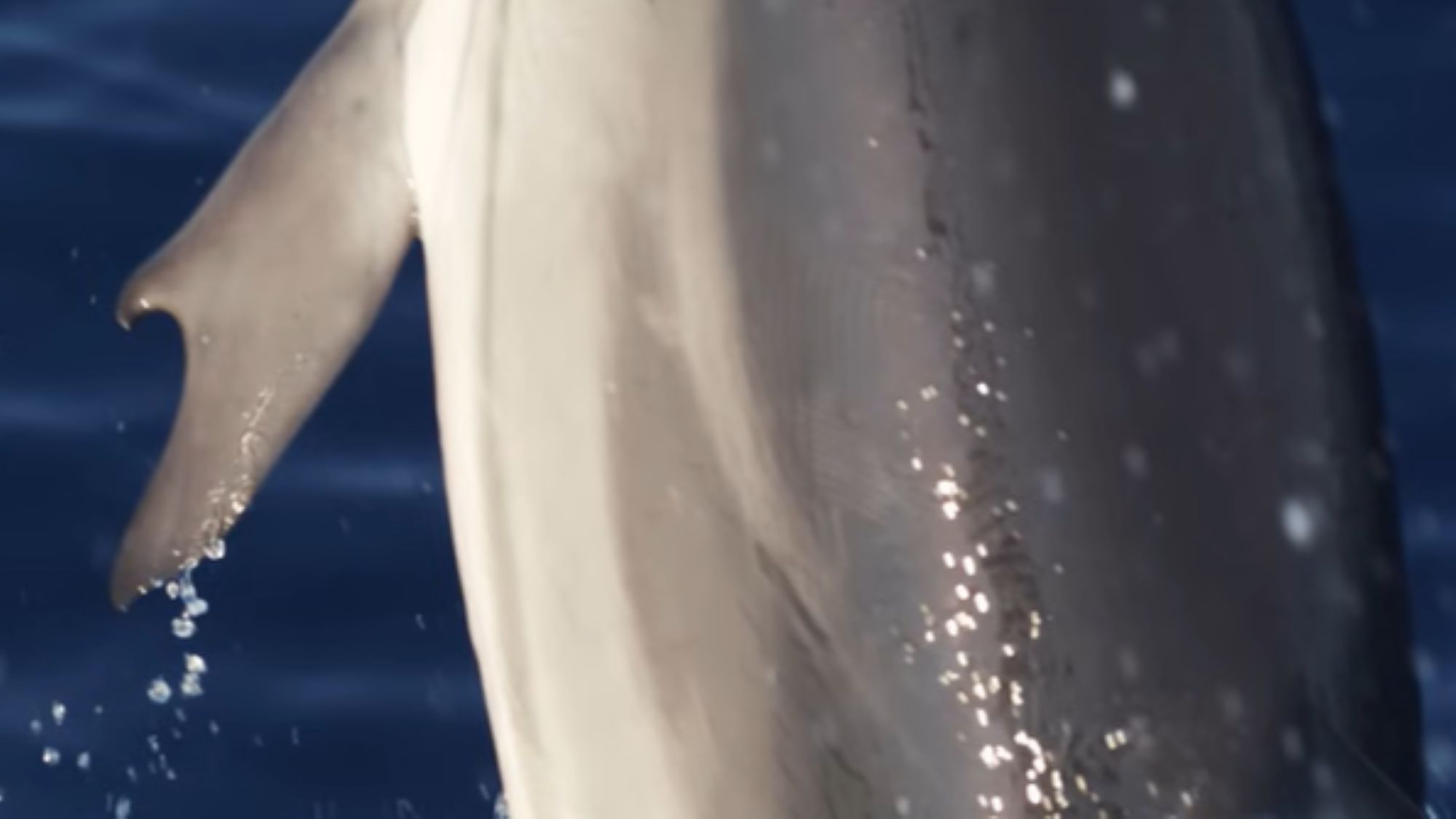
A rare dolphin with thumb-like flippers has been discovered in the Gulf of Corinth in Greece. Pelagos Cetacean Research Institute researchers came across this unique dolphin twice last summer while conducting boat surveys along the Greek coast.
Despite its flippers’ unusual shape, the dolphin kept up with its group, engaging in swimming, leaping, bow-riding, and playing with fellow dolphins, as reported by Alexandros Frantzis, the scientific coordinator and president of the Pelagos Cetacean Research Institute.
“It was the very first time we saw this surprising flipper morphology in 30 years of surveys in the open sea and also in studies while monitoring all the stranded dolphins along the coasts of Greece for 30 years,” shared Frantzis, who captured the images of the dolphin with thumbs, in an email to Live Science.
Around 1,300 striped dolphins in the Gulf of Corinth
The Gulf of Corinth is nestled between the Greek mainland and the Peloponnese peninsula. Within its waters, there exists a distinctive community of dolphins, including common dolphins (Delphinus delphis), Risso’s dolphins (Grampus griseus), and striped dolphins (Stenella coeruleoalba).
The dolphin with the unique thumbs was identified as a striped dolphin, according to Frantzis.
🧵ΣΠΑΝΙΟ ΔΕΛΦΙΝΙ ΜΕ ΕΜΦΑΝΕΙΣ ΑΝΤΙΧΕΙΡΕΣ ΣΤΟΝ ΚΟΡΙΝΘΙΑΚΟ!
15 εκατομμύρια χρόνια εξέλιξης μπροστά στα μάτια μας.Το Ινστιτούτο Κητολογικών Ερευνών Πέλαγος μελετά τα δελφίνια πάνω από 25 χρόνια και για άλλη μια φορά ανακάλυψαν κάτι εξαιρετικά σπάνιο: Δελφίνι με εμφανείς αντίχειρες! pic.twitter.com/02S4YXYvoS
— My Dolphin Club (@MyDolphinClub1) November 15, 2023
Approximately 1,300 striped dolphins inhabit the Gulf of Corinth, forming an isolated group separate from the broader Mediterranean population. Frantzis suggests the distinctive flipper might be a result of rare and irregular genes emerging from continuous interbreeding within this specific population.
Dolphin’s unique flipper is likely tied to genetic makeup
Lisa Noelle Cooper, an associate professor specializing in mammalian anatomy and neurobiology at Northeast Ohio Medical University, agrees that the dolphin’s unique flipper is likely due to its genetic makeup.
“I’ve never seen a flipper of a cetacean that had this shape,” Cooper told Live Science in an email. “Given that the defect is in both the left and right flippers, it is probably the result of an altered genetic program that sculpts the flipper during development as a calf.”
Cetaceans, which include marine mammals such as whales, dolphins, and porpoises, have developed unique front limbs featuring more phalanges or finger bones compared to other mammals.
Bruna Farina, a doctoral student focusing on paleobiology and macroevolution at the University of Fribourg in Switzerland, said that these bones form hand-like structures encased in a soft-tissue flipper, resembling a human hand.
Dolphins have thumbs, even though they are not as noticeable as humans and are hidden by their flippers, as explained by Farina in an email to Live Science.
See all the latest news from Greece and the world at Greekreporter.com. Contact our newsroom to report an update or send your story, photos and videos. Follow GR on Google News and subscribe here to our daily email!



